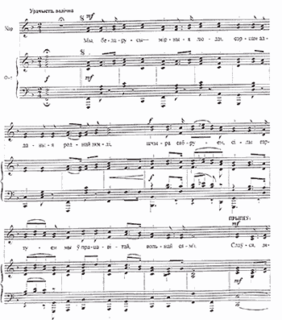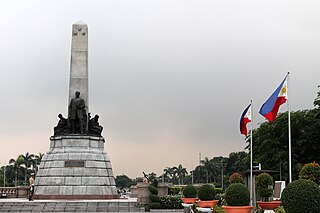
The "State Anthem of the Republic of Belarus", better known as "My Belarusy", is the national anthem of Belarus. It was originally written in the 1940s and adopted in 1955 for use in the Byelorussian Soviet Socialist Republic. The music of the Byelorussian SSR's regional anthem was composed by Niescier Sakałoŭski and the lyrics were written by Michas Klimkovič. After the dissolution of the Soviet Union, the music composed by Sakalowski was kept and the lyrics were discarded. New lyrics, which were written by Klimkovič and Uladzimir Karyzna, were adopted by a presidential decree issued on 2 July 2002. The lyrics now speak of a friendly Belarus, honoring past military battles and looking forward to the future.

The flag of Belarus is a vertically-bisected red-and-green flag with a white-and-red ornament pattern placed at the hoist (staff) end. The current design was introduced in 2012 by the State Committee for Standardisation of the Republic of Belarus, and is adapted from a design approved in a May 1995 referendum. It is a modification of the 1951 flag used while the country was a republic of the Soviet Union. Changes made to the Soviet-era flag were the removal of communist symbols – the hammer and sickle and the red star – as well as the reversal of the colours in the ornament pattern. Since the 1995 referendum, several flags used by Belarusian government officials and agencies have been modelled on this national flag.

The national emblem of Belarus features a ribbon in the colors of the national flag, a map of Belarus, wheatears and a red star. It is sometimes referred to as the coat of arms of Belarus, although in heraldic terms this is inaccurate as the emblem does not respect the rules of conventional heraldry. The emblem is an allusion to one that was used by the Byelorussian SSR, designed by Ivan Dubasov in 1950, with the biggest change being a replacement of the Communist hammer and sickle with an outline map of Belarus. The Belarusian name is Dziaržaŭny herb Respubliki Biełaruś, and the name in Russian is Gosudarstvennyĭ gerb Respubliki Belarusʹ.

The Ministry of Internal Affairs of Belarus, abbreviated МUS (МУС) in Belarusian and MVD (МВД) in Russian, is a body of the Belarusian Government that is charged with the internal affairs of Belarus. Day to day law enforcement is carried out by the Militsiya. The Ministry is also tasked with providing security to state buildings and officials. Organizations such as the Presidential Guard are under the control of the Ministry. The clearing of landmines is among the tasks of the ministry.

The prime minister of the Republic of Belarus is the de jure head of government of Belarus. Until 1991, it was known as the Chairman of the Council of Ministers of the Byelorussian Soviet Socialist Republic as the head of the government of the constituent republic of the Soviet Union.

Cultural heritage is the legacy of tangible and intangible heritage assets of a group or society that is inherited from past generations. Not all legacies of past generations are "heritage"; rather, heritage is a product of selection by society.

The National State TV and Radio Company of the Republic of Belarus, known as Belteleradiocompany or simply Belteleradio, is the state television and radio broadcasting service in Belarus.

Cultural property does not have a universal definition, but it is commonly considered to be tangible items that are part of the cultural heritage of a group or society. They include such items as cultural landscapes, historic buildings, works of art, archaeological sites, as well as collections of libraries, archives and museums.
Cultural Heritage of Serbia represents the totality of national cultural heritage in Serbia as defined by Serbia's Law on Cultural Goods. Some of national heritage sites in Serbia are also World Heritage Sites.

Visitors to Belarus must obtain a visa from one of the Belarusian diplomatic missions unless they come from one of the visa exempt countries or if their visa had been approved in advance for collection on arrival.

The Philippine Registry of Cultural Property, abbreviated as PRECUP is a national registry of the Philippine Government used to consolidate in one record all cultural property that are deemed important to the cultural heritage, tangible and intangible, of the Philippines. On June 11, 2018, the entries in the newly updated PRECUP was at 3,921. Additionally, 1,259 out of 1,715 LGUs, or 73 percent of LGUs have established local cultural inventories (LCI).

Cultural property protection in Poland
Honored Artist of the Byelorussian SSR is the English translation of two different awards of the Byelorussian SSR, the older Soviet forms of two of the modern orders, decorations, and medals of Belarus.

The Flanders Heritage Agency is a cultural heritage agency sponsored by the Flemish Government. The organisation is split into four subdivisions; the former VIOE, which inventories Beschermd erfgoed in the Flemish Region; the agency "Ruimte en Erfgoed" which executes policy on heritage management and protection; the Ministry department of Town and County Planning, Housing Policy and Immovable Heritage, or Ruimtelijke Ordening, Woonbeleid en Onroerend Erfgoed (RWO), which supports the Minister of Culture on policy decisions; and Inspectie RWO, which is the inspection arm of the RWO.

The National Cultural Heritage Act, officially designated as Republic Act No. 10066, is a Philippine law that created the Philippine Registry of Cultural Property (PRECUP) and took other steps to preserve historic buildings that are over 50 years old. It was signed into law on March 25, 2009.
The cultural monuments of the Czech Republic are protected properties designated by the Ministry of Culture of the Czech Republic. Cultural monuments that constitute the most important part of the Czech cultural heritage may be declared national cultural monuments by a regulation of the Government of the Czech Republic. Government may also proclaim a territory, whose character and environment is determined by a group of immovable cultural monuments or archaeological finds, as a whole, as a monument reservation. Ministry of Culture may proclaim a territory of a settlement with a smaller number of cultural monuments, historical environment or part of a landscape area that display significant cultural values as a monument zone.

Church of the Assumption of the Blessed Virgin Mary is a former Bernardine, now parish Catholic Church in village Budslau, Myadzyel Raion, Minsk Region, Belarus. The church is a monument of architecture of the late Baroque, it has Budslau icon of Our Lady - one of the most revered Catholic images. In 1996 Pope John Paul II proclaimed this icon the patron of Belarus.

The architecture of Belarus spans a variety of historical periods and styles and reflects the complex history, geography, religion and identity of the country. Several buildings in Belarus have been designated as UNESCO World Heritage Sites in recognition of their cultural heritage, and others have been placed on the tentative list.














